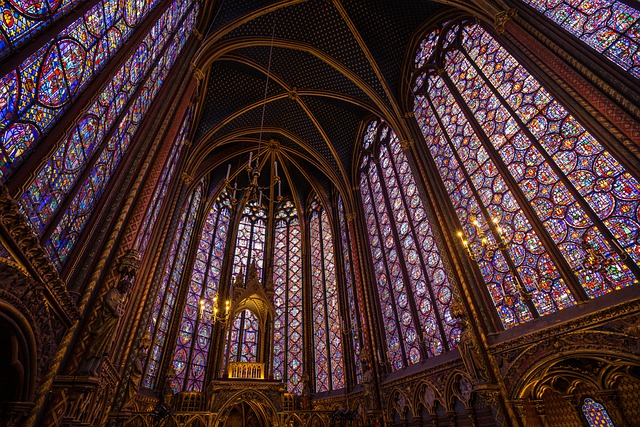# AI Art: How Algorithms Are Shaping the Future of Visual Expression and Redefining Aesthetics
## The Convergence of Technology and Creativity
Artificial intelligence (AI) is no longer confined to the realms of science fiction; it has become an integral part of various industries, including the art world. As algorithms evolve, they are increasingly being utilized to create art that challenges traditional notions of creativity and aesthetics. From generating stunning visual pieces to assisting artists in their creative processes, AI is transforming how we perceive and interact with art. This convergence of technology and creativity raises profound questions about authorship, originality, and the very nature of artistic expression.
Emerging technologies such as machine learning and neural networks have made it possible for computers to analyze vast datasets of existing artwork. By doing so, AI can learn patterns, styles, and techniques that inform its own creative output. For instance, projects like DeepArt and DALL-E leverage deep learning algorithms to produce images that mimic the styles of famous artists or generate entirely new concepts based on textual descriptions. This not only democratizes art creation but also expands the boundaries of what is considered artistic expression.
Moreover, the role of the artist is evolving in this new landscape. Artists are no longer just creators but also curators and collaborators with AI systems. The traditional artist’s hand is being augmented by computational power, leading to hybrid forms of art that blend human intuition with algorithmic precision. This shift invites a broader discourse on the definition of creativity and the role of technology in shaping cultural narratives.
## Redefining Aesthetics Through Algorithmic Innovation
In the realm of aesthetics, AI is redefining what beauty and artistic value mean. Algorithms can produce images that are aesthetically pleasing according to specific parameters, often leading to works that resonate with viewers on a subconscious level. For instance, generative adversarial networks (GANs) can create hyper-realistic portraits that challenge the viewer’s understanding of authenticity in art. These AI-generated images often evoke emotional responses comparable to those elicited by traditional artworks, prompting a re-evaluation of the criteria we use to judge artistic merit.
Furthermore, AI’s ability to analyze and synthesize various art forms allows for the emergence of new styles and movements. Artists can experiment with combinations of techniques that might not have been feasible without computational assistance. The resulting pieces often blur the lines between genres, creating a rich tapestry of visual expression that reflects the complexities of contemporary culture. This fusion of styles not only showcases the adaptability of art but also highlights how technology can serve as a catalyst for innovation.
A notable example of this phenomenon is the rise of algorithmically generated art exhibitions, which have gained traction in galleries and museums worldwide. These exhibitions often challenge traditional curatorial practices, as they invite audiences to engage with art in new ways. The inclusion of AI-generated works in prestigious art spaces signifies a growing acceptance of technology as a legitimate medium for artistic expression. As a result, the conversation surrounding aesthetics is evolving, pushing the boundaries of what can be considered art.
## The Ethical Implications of AI in Art
While the integration of AI into the art world presents exciting opportunities, it also raises significant ethical questions. The issue of authorship is perhaps the most contentious. When an AI generates an artwork, who is the true creator—the algorithm, the programmer, or the artist who guided its development? This ambiguity complicates the traditional understanding of artistic ownership and intellectual property rights. As AI continues to produce works that can stand on their own, the art community must grapple with how to attribute credit and compensation fairly.
Additionally, the potential for AI to perpetuate biases present in the datasets it learns from cannot be overlooked. If an algorithm is trained predominantly on works from a specific demographic or cultural background, it may inadvertently replicate and reinforce existing stereotypes or exclude diverse perspectives. This concern is particularly relevant in an era where inclusivity and representation are paramount in artistic discourse. Artists and technologists alike must remain vigilant about the sources of data they use to train AI systems, ensuring that a wide array of voices and styles are represented.
Moreover, the proliferation of AI-generated art raises questions about the value of human creativity. As machines become more capable of producing high-quality art, there is a fear that the unique qualities of human expression may be overshadowed. However, many argue that AI should be viewed as a tool rather than a replacement. Just as photography did not eliminate painting, AI can coexist with traditional art forms, enriching the creative landscape rather than diminishing it.
## Conclusion: Embracing a New Era of Artistic Expression
The intersection of AI and art is a dynamic and evolving field that promises to redefine visual expression and aesthetic standards. As algorithms become more sophisticated, they offer artists unprecedented opportunities to innovate and collaborate. This transformation challenges our understanding of creativity, prompting us to rethink the roles of artist and machine in the creative process.
While the ethical implications of AI-generated art warrant careful consideration, the potential for new forms of artistic expression is immense. Embracing these changes may lead to a richer, more diverse artistic landscape that reflects the complexities of our digital age. Ultimately, the future of art lies not in the replacement of human creativity but in the harmonious integration of technology and artistic vision, paving the way for a new era of visual expression. As we stand on the cusp of this transformation, it is essential to engage in thoughtful dialogue about the implications of AI in art, ensuring that the creative spirit continues to thrive in an increasingly algorithmic world.

